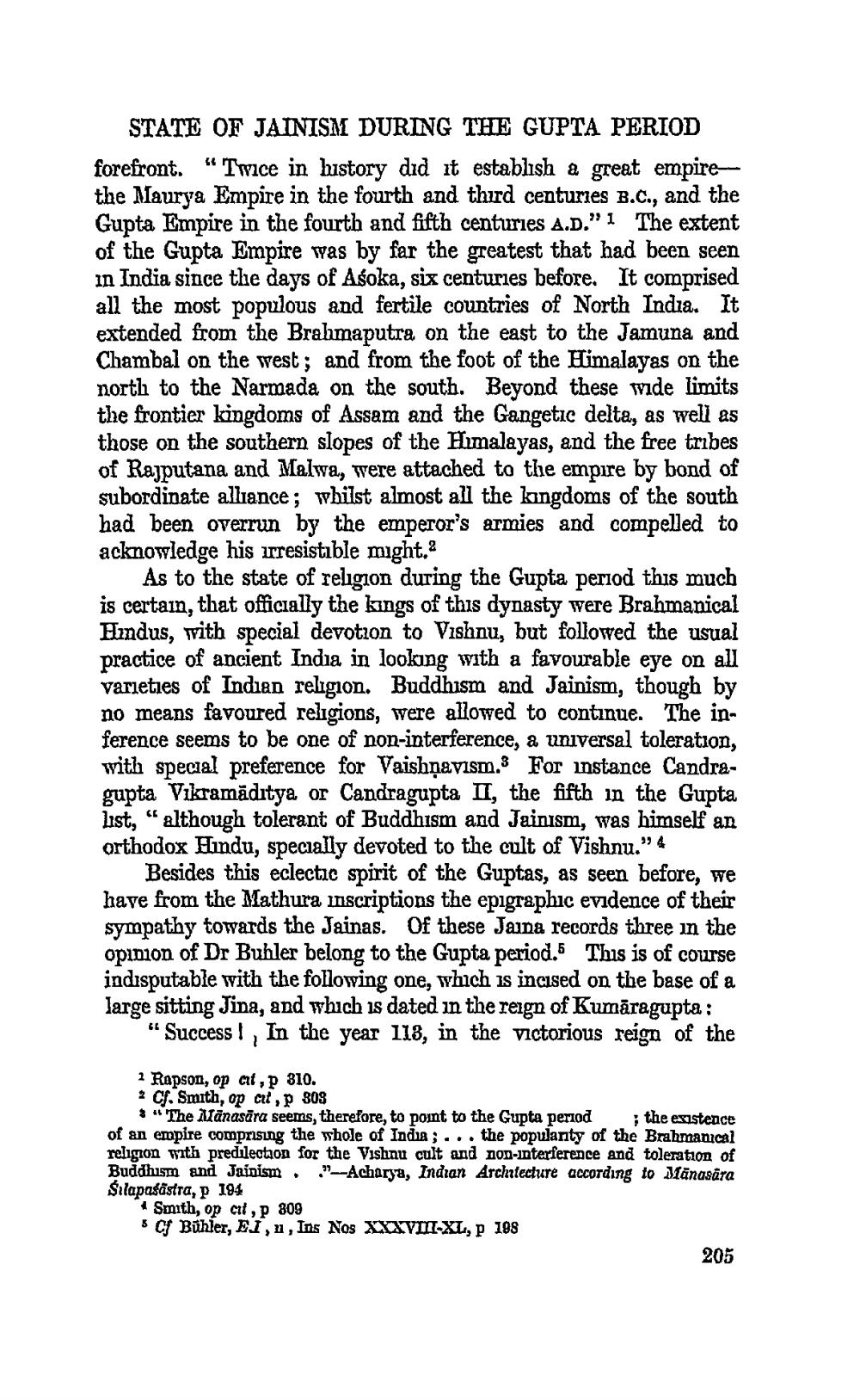________________ STATE OF JAINISM DURING THE GUPTA PERIOD forefront. "Trice in history did it establish a great empire the Maurya Empire in the fourth and third centuries B.C., and the Gupta Empire in the fourth and fifth centuries A.D." I The extent of the Gupta Empire was by far the greatest that had been seen in India since the days of Asoka, six centuries before. It comprised al the most populous and fertile countries of North India. It extended from the Brahmaputra on the east to the Jamuna and Chambal on the West; and from the foot of the Himalayas on the north to the Narmada on the south. Beyond these wide limits the frontier kingdoms of Assam and the Gangetic delta, as well as those on the southern slopes of the Himalayas, and the free tribes of Rajputana and Malwa, were attached to the empire by bond of subordinate alliance; whilst almost all the kingdoms of the south had been overrun by the emperor's armies and compelled to acknowledge his irresistible might. As to the state of religion during the Gupta period this much is certain, that officially the kings of this dynasty were Brahmanical Hmdus, with special devotion to Vishnu, but followed the usual practice of ancient India in looking with a favourable eye on all varieties of Indian religion. Buddhism and Jainism, though by no means favoured religions, were allowed to continue. The inference seems to be one of non-interference, a universal toleration, with special preference for Vaishnavism. For instance Candragupta Vikramaditya or Candragupta II, the fifth in the Gupta list," although tolerant of Buddhism and Jainism, was himself an orthodox Hindu, specially devoted to the cult of Vishnu." Besides this eclectic spirit of the Guptas, as seen before, we have from the Mathura inscriptions the epigraphic evidence of their sympathy towards the Jainas. Of these Jaina records three in the opinion of Dr Buhler belong to the Gupta period. This is of course indisputable with the following one, which is incised on the base of a large sitting Jina, and which is dated in the reign of Kumaragupta: "Success! In the year 113, in the victorious reign of the 1 Rapson, op af, 310. 2 Cf. Smith, op cul,p 808 * "The NIanasara seems, therefore, to point to the Gupta period ; the existence of an empire comprising the whole of India; ... the populanty of the Brahmanical religion with predilection for the Vishnu cult and non-interference and toleration of Buddhism and Jainism --Acharya, Indian Archatechure according to Manasata Silapatastra, 194 Smith, op cit, p 809 5 Cf Buhler, EJ, n, Ins Nos XXXVIII-XL, P 198 205




